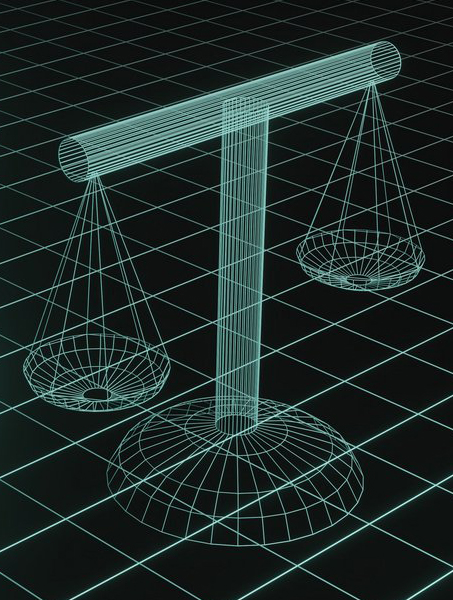Access to Justice and Digitalisation – a Nordic perspective
Digitalisation can challenge fundamental principles of the rule of law, with a focus on Denmark.

Summary: Public administration in the Nordic states is highly digitalised.Due to the historical development of the Nordic welfare states, is often obtained through administrative procedures rather than independent courts. This system lends itself to the digitalisation of legal processes, which are already highly structured via a central system. However, this does not mean that both the digitalised processes and outcomes always boost access to justice, and they can have the opposite effect.
Access to justice is closely related and interlinked with the state and the rule of law. A prominent and common feature is a strong focus on the court system and the role of independent courts in maintaining the core values and ideals of the rule of law. The courts ensure that the legislature stays within the framework of the Constitution, and access to a fair trial is a fundamental – even a human – right.
What does access to justice mean?
The concept of access to justice is not clear and unequivocal, and the understanding of both “justice” and “access” varies over time and in different contexts. It includes a series of fundamental issues that are of great importance not only for lawyers and judges but also for all citizens and for society as a whole. That said, there are some basic tenets that are key the world over.
“Justice” usually includes elements such as equality before the law, which means that all citizens must be treated equally. Another prominent element is fairness, which includes both substantial fairness, in the sense of reaching the legally correct decision (the result), and procedural fairness, with a series of legal requirements for how concrete cases are handled. Justice also presupposes respect for a citizen’s individual rights, including the constitutional freedoms such as the freedom of speech, freedom of assembly, freedom of belief etc.
In a rule-of-law state, the courts are perceived as the primary safeguard against abuse of power. Thus, “access” to justice is inextricably linked with access to the courts. The citizens must be able to address infringements of rights and defend themselves in criminal proceedings.
In a broader perspective, access to justice can be understood as:
the means through which individuals or groups solve legal problems.
In this understanding of it, various ways of remedying civil wrongs and holding executive power to account are also included. Thus, both private law disputes between citizens and public law disputes involving citizens and administrative authorities are covered. Access to court is still a core element, but review through administrative recourse and different types of dispute boards are also included.
From a Nordic perspective this broader understanding of the term access to justice is particularly relevant.
Overview: The most recent constitutions from the Nordic countries
| Country | Name of Constitution | First adopted & most recently changed |
Denmark | Grundloven | Created: 1849 Last amended: 1953 |
Finland | Suomen perustuslaki | Created: 1919 Last amended: 2000 |
Iceland | Stjórnarskrá lýðveldisins Íslands | Created: 1944 Last amended: 2013 |
Norway | Kongeriket Norges Grunnlov | Created: 1814 Last amended: 2014 |
Sweden | Sveriges författning | Created: 1809 Last amended: 2014 |
Sources: The Danish Parliament, the Ministry of Justice in Finland, The Constitute Project (Iceland), Stortinget (Norway) and The Constitution of Sweden.
Access to justice from a Nordic perspective
In the twentieth century, the Nordic states, which had already been governed by the rule of law for some considerable time, developed into welfare states. A welfare state can be defined as a form of society where public authorities and institutions are responsible for the lives of citizens by securing a minimum level of economic prosperity. In contrast to states offering poverty relief, citizens in a welfare state enjoy social rights without losing civil rights, such as the right to marry or the right to vote. The Nordic welfare states provide a wide range of welfare services in relation to health, education, care services and so on.
With societal change and the emergence of the welfare state, the administrative authorities became very significant public bodies. This entailed fundamental changes to do with the relationship between the authorities and citizens, as well as to do with the perception of access to justice. For ordinary citizens and their everyday lives, the public administrative authorities began to play a much more important role than the courts.
Welfare regulation and access to justice
With the introduction of the welfare state from 1929 onwards, a new form of legal regulation saw the light of day. Regulation to do with welfare was more purpose-oriented than traditional regulation to do with the rule of law. Framework legislation and discretionary rules became increasingly widespread. This type of regulation had a larger degree of variability; there was – and still is – considerable scope when it comes to making concrete assessments and the administrative authorities began to have much more discretion.
But this type of legal regulation also makes it significantly more difficult for citizens to know and foresee their legal position and it raises important issues relating to access to justice. Often citizens cannot fully know their legal position until a decision has been made. Contact with and guidance from public administrative authorities are indispensable for citizens’ access to justice. In a welfare state context, where public authorities play a decisive role in many citizens’ everyday lives, and where legal rights presuppose that administrative authorities make a decision or are otherwise involved, access to justice in administrative matters takes on central importance.

The term ‘access to justice’ is difficult to translate precisely from English to the Scandinavian languages. The term in English encompasses several elements depending on the context, many of which are discussed in this article. Sometimes it is translated as ‘retfærdighed’ or ‘rättvisa’ (simply ‘justice’ in Danish or Swedish), but this does not adequately represent all elements covered by the more inclusive ‘access to justice’. Conversely, ‘retsstaten’ or ‘rättsstatsprincipen’ is difficult to translate directly into English, although the principles understood by the term are conveyed by the term ‘rule of law’.
In Sweden an administrative court system has been developed i.e. a special court for administrative cases between a citizen and the state or other public authorities. In Denmark and Norway access to administrative recourse displaces to some degree the role of the court in securing access to justice. This means that the citizens can appeal an administrative decision to another administrative body, while elsewhere in the world, like the UK for example, this appeal would likely be to a court.
Amongst the state administrative systems, administrative redress has a very long history in Denmark. And with the rise of the welfare state, the administrative system of recourse has been expanded and over the years numerous administrative complaint or appeal bodies and numerous dispute boards have been established.
To sum up, access to justice in a welfare state – especially in Denmark – is closely connected to the case processing of the administrative authorities, both in regard to the first instance and also in regard to redress (the appeal process).
Access to Justice in a digitalised society
Denmark is a pioneering country regarding digitalisation, which has again brought changes to citizens’ access to justice. The term “digitalisation” describes a process – not a technology – and comprises various measures and actions including the digitalisation of the communication, automation and decision making within case management, as well as information processes e.g. data collection through sensors. Digital solutions often lead to changes in the organisation of legal processes and legislation and thus have a fundamental impact on society.
Danish political parties reached a parliamentary agreement in 2018 stating that legislators must make sure that all legislation is adapted to the digital age. This means that legislation must be designed in such a way that digitalisation is possible. The system of public administration in Denmark is a clear frontrunner in terms of digitalisation and has already undergone significant changes. Contact between the administrative authorities and citizens is predominantly digitalised. As a rule of thumb, all communication from the public sector is sent digitally to a citizen’s electronic mailbox (e-Boks).
Administrative case processing is often based on standard forms, and software robots and digital self-service solutions are increasingly used, with the consequence that citizens are expected to find out for themselves what their legal rights are and how they can pursue these using the various digital solutions. Even the decisions themselves are increasingly digitalised and automated as well, meaning that many are made by IT systems without human intervention.
The pros and cons of digitalisation
Access to justice in a digitalised welfare state is strengthened on some parameters but weakened on others. Digitalisation undoubtedly brings with it many benefits both for the authorities and for ordinary people. Citizens get easier and faster access to information, and arguably the authorities are more accessible, e.g. they can contact the authorities when it suits them regardless of office hours etc. As for case processing, digitalisation can help ensure that the information relevant to the case is obtained from the start increasing the likelihood of an informed outcome. People can also follow their case proceedings digitally and thus may have a better understanding of what is going on. Finally, digitalised case handling can provide more uniform decisions.
On the other hand, digitalisation also entails a series of disadvantages from an access to justice perspective. There can be a lack of or inadequate compliance with even basic administrative legal rules and principles, and thus less “justice”. The traditional approach to client participation is somewhat abandoned in digital processes. A main focal point here is the procedural importance of the right to be heard, which also ensures a factually correct basis for any decision. Another fundamental procedural right is the right to have a reasoned decision (stating the reasons behind the decision), thus ensuring that the client can better understand it. With digital processes, the reasoning is usually standardised. Furthermore, the fundamental procedural right to complain about the decision and possible redress becomes more challenging.
Additionally, there is a clear risk of digitalisation leading to increased inequality regarding access to public services. Different parts of the population experience different kinds of challenges with digitalisation. It can constitute a barrier to some receiving the services to which they are entitled. There is therefore a real risk that social inequality is reinforced through digital inequality.
Law can shed light on societal changes
This article is published in response to an interest in the digital world and how it affects us in our everyday lives.
Further reading:
- Anna Wallerman Ghavanini and Sebastian Wejedal, Access to justice i Skandinavien [Access to justice in Scandinavia] (Stockholm: Santérus Förlag, 2022).
- Bettina Lemann Kristiansen, “Access to Justice: Rule of Law from a Citizen's Perspective” in Public Law: Insights into Danish Constitutional and Administrative Law, eds. Peter Aagaard Nielsen and Jesper Olsen (Hans Reitzels Forlag, 2022), pp. 511-538.
- Francesco Francioni (ed.), Access to Justice as a Human Right (Oxford University Press, 2013).
- Mauro Cappelletti (ed.), Access to Justice and the Welfare State (European University Institute, 1981).


